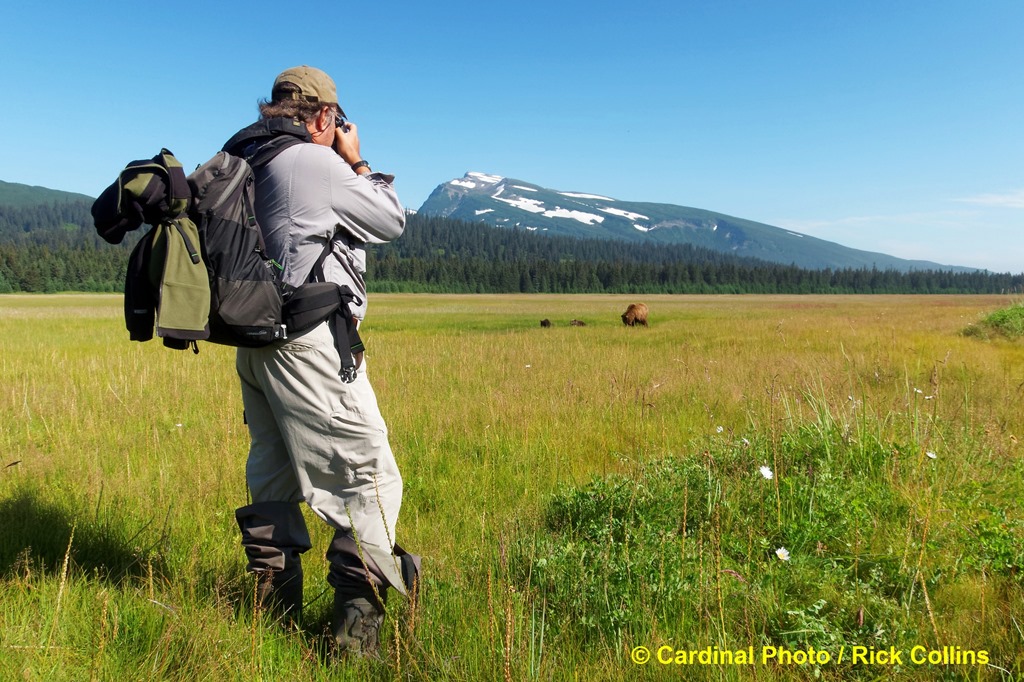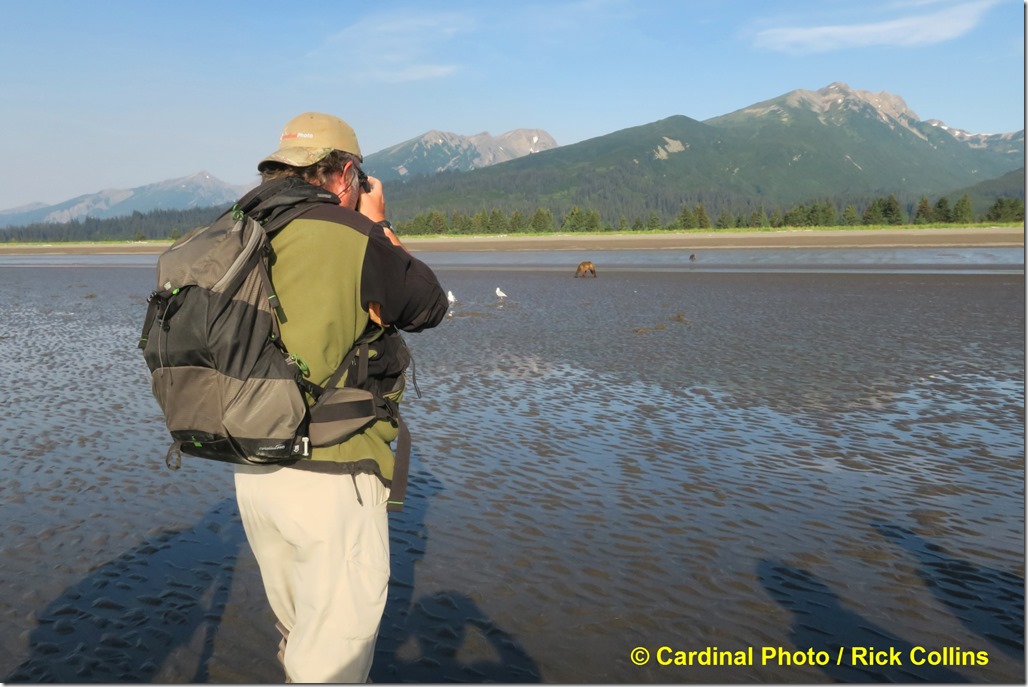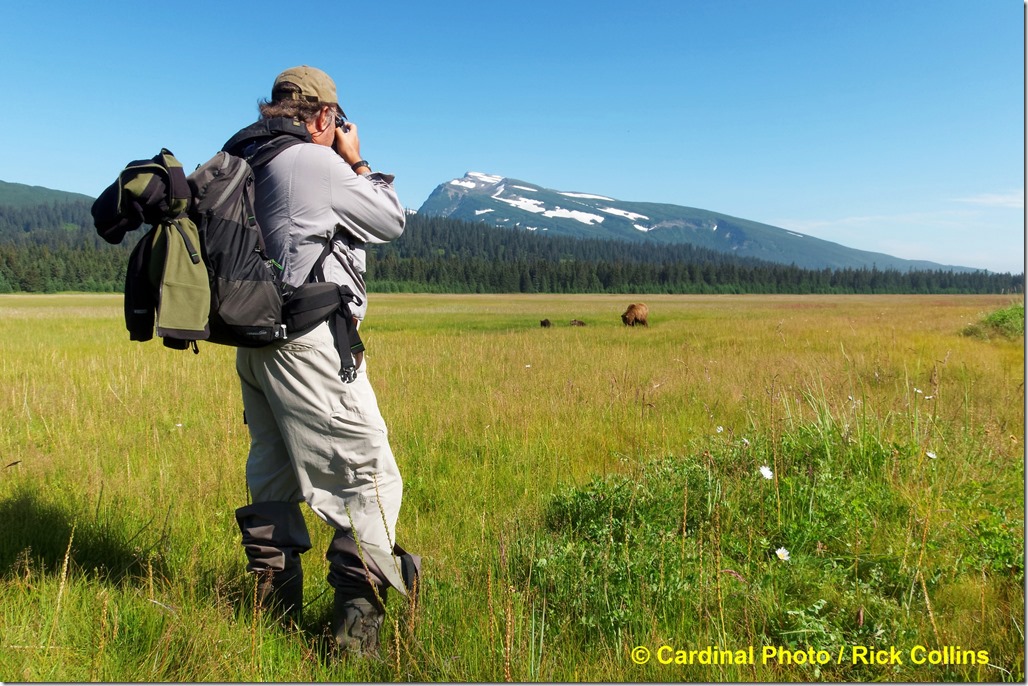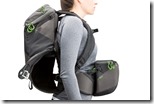- Photo Safaris
- Alaska Bears & Puffins World's best Alaskan Coastal Brown Bear photo experience. Small group size, idyllic location, deluxe lodging, and Puffins!
- Participant Guestbook & Testimonials Candid Feedback from our participants over the years from our photo safaris, tours and workshops. We don't think there is any better way to evaluate a possible trip or workshop than to find out what others thought.
- Custom Photo Tours, Safaris and Personal Instruction Over the years we've found that many of our clients & friends want to participate in one of our trips but the dates we've scheduled just don't work for them or they'd like a customized trip for their family or friends.
- Myanmar (Burma) Photo Tour Myanmar (Burma) Photo Tour December 2017 -- with Angkor Wat option
- Reviews Go hands-on
- Camera Reviews Hands-on with our favorite cameras
- Lens reviews Lenses tested
- Photo Accessories Reviews Reviews of useful Photo and Camera Accessories of interest to our readers
- Useful Tools & Gadgets Handy tools and gadgets we've found useful or essential in our work and want to share with you.
- What's In My Camera Bag The gear David Cardinal shoots with in the field and recommends, including bags and tools, and why
- Articles About photography
- Getting Started Some photography basics
- Travel photography lesson 1: Learning your camera Top skills you should learn before heading off on a trip
- Choosing a Colorspace Picking the right colorspace is essential for a proper workflow. We walk you through your options.
- Understanding Dynamic Range Understanding Dynamic Range
- Landscape Photography Tips from Yosemite Landscape Photography, It's All About Contrast
- Introduction to Shooting Raw Introduction to Raw Files and Raw Conversion by Dave Ryan
- Using Curves by Mike Russell Using Curves
- Copyright Registration Made Easy Copyright Registration Made Easy
- Guide to Image Resizing A Photographers' Guide to Image Resizing
- CCD Cleaning by Moose Peterson CCD Cleaning by Moose Peterson
- Profiling Your Printer Profiling Your Printer
- White Balance by Moose Peterson White Balance -- Are You RGB Savvy by Moose Peterson
- Photo Tips and Techniques Quick tips and pro tricks and techniques to rapidly improve your photography
- News Photo industry and related news and reviews from around the Internet, including from dpreview and CNET
- Getting Started Some photography basics
- Resources On the web
- My Camera Bag--What I Shoot With and Why The photo gear, travel equipment, clothing, bags and accessories that I shoot with and use and why.
- Datacolor Experts Blog Color gurus, including our own David Cardinal
- Amazon Affiliate Purchases made through this link help support our site and cost you absolutely nothing. Give it a try!
- Forums User to user
- Think Tank Photo Bags Intelligently designed photo bags that I love & rely on!
- Rent Lenses & Cameras Borrowlenses does a great job of providing timely services at a great price.
- Travel Insurance With the high cost of trips and possibility of medical issues abroad trip insurance is a must for peace of mind for overseas trips in particular.
- Moose Peterson's Site There isn't much that Moose doesn't know about nature and wildlife photography. You can't learn from anyone better.
- Journeys Unforgettable Africa Journeys Unforgettable -- Awesome African safari organizers. Let them know we sent you!
- Agoda International discounted hotel booking through Agoda
- Cardinal Photo Products on Zazzle A fun selection of great gift products made from a few of our favorite images.
- David Tobie's Gallery Innovative & creative art from the guy who knows more about color than nearly anyone else
- Galleries Our favorite images
MindShift rotation180 Panorama Camera Backpack Field tested: Great solution for an all-in-one field pack
MindShift rotation180 Panorama Camera Backpack Field tested: Great solution for an all-in-one field pack
Submitted by David Cardinal on Tue, 08/02/2016 - 10:02
 It's one thing to have a great, dedicated, camera backpack. There are many of those on the market. Some of my personal favorites are the StreetWalker HardDrive and my Think Tank Airport Takeoff for when I need a roller. I'm also looking forward to trying out the new MindShift MP-3, based on Moose Peterson's design. However, sometimes you need to bring along a variety of other goodies, like jackets and gloves for the changing weather, or food for a long day out, and you don’t need a huge supply of photo gear. That means you need a flexible pack that can store a wide variety of contents. If you add to that the requirement to get at your photo gear without taking your pack off -- a must when working in mud, deep sand, or powdery snow – you need a different kind of backpack.
It's one thing to have a great, dedicated, camera backpack. There are many of those on the market. Some of my personal favorites are the StreetWalker HardDrive and my Think Tank Airport Takeoff for when I need a roller. I'm also looking forward to trying out the new MindShift MP-3, based on Moose Peterson's design. However, sometimes you need to bring along a variety of other goodies, like jackets and gloves for the changing weather, or food for a long day out, and you don’t need a huge supply of photo gear. That means you need a flexible pack that can store a wide variety of contents. If you add to that the requirement to get at your photo gear without taking your pack off -- a must when working in mud, deep sand, or powdery snow – you need a different kind of backpack.
Enter MindShift's Rotation series of packs. They allow you to literally rotate the camera compartment (aka belt pack) around to the front using the waist belt. I was pretty skeptical that the system would be practical, but after having tried the rotation180° Professional Backpack, I became a believer. The Professional is great if you're bringing along essentially an entire backpacking load, but for more typical day use, the MindShift rotation180 Panorama Backpack is a great size for my needs. I used one as my field pack during my recent Alaska Bear & Puffin photo safaris, with great results

Here I am with the MindShift rotation180 Panorama Backpack on the mud flats, photographing clamming bears.
This is a perfect use case for the pack, as the last thing you want to do is have to set down your pack or gear in the mud.
When working with two cameras, I kept one in the pack, and the other on a BlackRapid strap slung over my shoulder, messenger bag style.
Comfort
Many photo packs aren't designed for extended use of the shoulder straps. They have mediocre straps, or insufficient padding or cooling. Or they are missing a waist belt or chest cinch. The MindShift rotation180 Panorama Backpack has all of those things. Even when fully loaded I hardly felt it. I particularly liked the way the internal frame and padding kept the pack from clinging to my back, making it much cooler on the unusually-warm days we had in Alaska this year.
Integrated Beltpack for camera gear storage
 The "pack within a pack" model for the camera compartment definitely leaves a bit less room for camera gear than in a fully-dedicated camera backpack of the same size. So, when you are looking at a rotation180 backpack, pay close attention to the internal camera compartment dimensions. In particular, the Panorama probably isn't the right pack if you are looking to stash a full-size DSLR like the Nikon D5 or Canon 1D X. I was able to keep my "mid-size" Nikon D810 in it, with a mid-range zoom lens, but it is really a better fit for either a smaller DSLR (it worked great with a Nikon D500) or a mirrorless camera.
The "pack within a pack" model for the camera compartment definitely leaves a bit less room for camera gear than in a fully-dedicated camera backpack of the same size. So, when you are looking at a rotation180 backpack, pay close attention to the internal camera compartment dimensions. In particular, the Panorama probably isn't the right pack if you are looking to stash a full-size DSLR like the Nikon D5 or Canon 1D X. I was able to keep my "mid-size" Nikon D810 in it, with a mid-range zoom lens, but it is really a better fit for either a smaller DSLR (it worked great with a Nikon D500) or a mirrorless camera.
The same is true for lenses. The camera section isn't tremendously deep (at 7.5 inches) so you're limited to the lenses you can store in it. Fortunately, I found that I could lay a fairly long lens, like a 70-200mm f/2.8, across the bottom of the top "day pack" section. Since it was over the padded lower section, and typical underneath my clothes, it was well protected. Similarly, I could use the top section for my Nikon D500 with 70-200mm f/4 attached, laying down. Obviously, I couldn't use the rotation feature to access whatever I put in the top section, but for times when I was traveling and wanted a safe place for them, it worked great.
There is a small tablet slot in the belt pack, good for a phone, phablet, or about an 8-inch tablet, but nothing much larger. MindShift also offers an optional camera gear insert – the rotation 180 Degree Panorama Photo Insert -- for the top "daypack" section of the pack, in case you have lots of smaller lenses or accessories that would benefit from storing in a more traditional way.

I found the tripod strap perfect for tightly securing my jacket when the day warmed up.
Notice that I don’t have the waist belt fastened (unbuckled it when I took off my jacket)
so I’d need to remember to re-fasten it before trying to use the rotation feature.
Fortunately the belt pack is on a “leash” so it wouldn’t have crashed to the ground even if I forgot.
Daypack features
 The top "daypack" section is mostly a single compartment, but it does have a smaller "pouch" on the inside, for very small items. Along with that, it has a separate top-zippered storage area in the flap of the top compartment, which I found perfect for sunglasses (in a case), sunscreen, and other small items I might need during the day. The side of the pack that isn't needed for the rotation feature has a water bottle holder that worked well, but I wish was elasticized. Underneath that is a zippered pocket which could hold my hand-held radio or something of similar size.
The top "daypack" section is mostly a single compartment, but it does have a smaller "pouch" on the inside, for very small items. Along with that, it has a separate top-zippered storage area in the flap of the top compartment, which I found perfect for sunglasses (in a case), sunscreen, and other small items I might need during the day. The side of the pack that isn't needed for the rotation feature has a water bottle holder that worked well, but I wish was elasticized. Underneath that is a zippered pocket which could hold my hand-held radio or something of similar size.
There is a tripod support system on the back of the pack, which I mostly used as a strap to hold my jacket when the weather warmed up during the day. That meant one less thing to try to cram into the daypack -- especially helpful if it had gotten wet. Speaking of getting wet, MindShift also offers an inexpensive rain cover for the pack.
Rotation – camera accessibility feature
 Of course the headline feature of the Rotation series is the rotating "belt pack" that is leashed to the overall pack, and housed inside the main pack when you are carrying the bag. To pull it around in front and get access to your camera gear, you simply remove a magnetic clasp and pull the bag out and around. One word of warning: Make sure you have the waist belt on before you do, of course.
Of course the headline feature of the Rotation series is the rotating "belt pack" that is leashed to the overall pack, and housed inside the main pack when you are carrying the bag. To pull it around in front and get access to your camera gear, you simply remove a magnetic clasp and pull the bag out and around. One word of warning: Make sure you have the waist belt on before you do, of course.
When you're through accessing your gear, just reverse the process. Sometimes I found it a little tricky to get the camera pack started back into the main pack, but it was usually quite easy. Because the clasp is magnetic, it also almost guides you to where it needs to clip -- an amazingly-useful feature since you are doing this essentially behind your back. I was initially quite worried that it'd be hard to re-clip the camera pack, but in practice it was never an issue.
Overall impressions
I really like this pack. It is perfect for a day in the field if you have a small-to-moderate camera rig, and need to be carrying your pack for any length of time -- especially if you want to access your camera while you're hiking and don't want it draped over your neck.
The MindShift rotation180 Panorama Backpack doesn't have room for a computer, so it won't replace an "all-in-one" travel pack, and it isn't designed for large DSLR rigs, so for those occasions, I'll still be using my StreetWalker HardDrive -- that can accommodate my full camera setup and laptop. But for a day in the field, the $199 MindShift rotation180 Panorama Backpack has become my new “go to” backpack.
Full Specifications
Dimensions
Backpack exterior:
9.8” W x 19.7” H x 8.3” L
(25 x 50 x 21 cm)
Beltpack interior:
9.4” W x 7.5” H x 4.7” L
(24 x 19 x 12 cm)
Beltpack exterior:
9.8” W x 8.2” H x 5.1” L
(25 x 22 x 13 cm)
Weight
Backpack
2.0 lbs (0.9 kg)
Beltpack
0.9 lbs (0.4 kg)
Total
2.9bs (1.3 kg)
Volume
Backpack:
1013 cubic inches or 16.6 liters
Beltpack:
329 cubic inches or 5.4 liters
Total:
1342 cubic inches or 22 liters
Materials
Exterior: For superior water resistance, all exterior fabric has a durable water-repellant coating, plus the underside of the fabric has a polyurethane coating. It also has YKK® zippers, 420D velocity nylon, 420D high density nylon, 210D velocity nylon, Ultra-Stretch fabric, 350G air-mesh, 3-ply bonded nylon thread.
Interior: 200D polyester lining, belly-o mesh pockets, closed-cell antilon foam, 3-ply bonded nylon thread.
- Log in to post comments

